Autoantibody repertoire characterization provides insight into the pathogenesis of monogenic and polygenic autoimmune diseases
- PMID: 36845162
- PMCID: PMC9955420
- DOI: 10.3389/fimmu.2023.1106537
Autoantibody repertoire characterization provides insight into the pathogenesis of monogenic and polygenic autoimmune diseases
Abstract
Autoimmune diseases vary in the magnitude and diversity of autoantibody profiles, and these differences may be a consequence of different types of breaks in tolerance. Here, we compared the disparate autoimmune diseases autoimmune polyendocrinopathy-candidiasis-ecto-dermal dystrophy (APECED), systemic lupus erythematosus (SLE), and Sjogren's syndrome (SjS) to gain insight into the etiology of breaks in tolerance triggering autoimmunity. APECED was chosen as a prototypical monogenic disease with organ-specific pathology while SjS and SLE represent polygenic autoimmunity with focal or systemic disease. Using protein microarrays for autoantibody profiling, we found that APECED patients develop a focused but highly reactive set of shared mostly anti-cytokine antibodies, while SLE patients develop broad and less expanded autoantibody repertoires against mostly intracellular autoantigens. SjS patients had few autoantibody specificities with the highest shared reactivities observed against Ro-52 and La. RNA-seq B-cell receptor analysis revealed that APECED samples have fewer, but highly expanded, clonotypes compared with SLE samples containing a diverse, but less clonally expanded, B-cell receptor repertoire. Based on these data, we propose a model whereby the presence of autoreactive T-cells in APECED allows T-dependent B-cell responses against autoantigens, while SLE is driven by breaks in peripheral B-cell tolerance and extrafollicular B-cell activation. These results highlight differences in the autoimmunity observed in several monogenic and polygenic disorders and may be generalizable to other autoimmune diseases.
Keywords: B cell receptor (BCR); Sjogren's syndrome; autoantibody; autoimmune disease (AD); autoimmune polyendocrinopathy candidiasis ecotodermal dystrophy (APECED); systemic lupus erythematosus (SLE).
Copyright © 2023 Clarke, Du, Kumar, Okitsu, Schuette, An, Zhang, Tzvetkov, Jensen, Niewold, Ferre, Nardone, Lionakis, Vlach, DeMartino and Bender.
Conflict of interest statement
TC, PD, SK, SO, MS, QA, JZ, ET, JV, JD, AB are/have been employees of EMD Serono, Billerica MA, USA or Merck KGaA, Darmstadt, Germany. The remaining authors declare that the research was conducted in the absence of any commercial or financial relationships that could be constructed as a potential conflict of interest. The authors declare that this study received funding from EMD Serono Inc and Merck KGaA. The funders were involved in the study design, collection, analysis, interpretation of data, the writing of this article and the decision to submit it for publication.
Figures
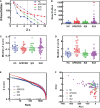
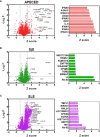
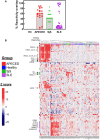
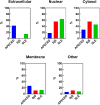
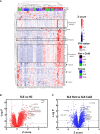
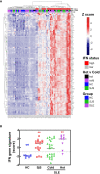

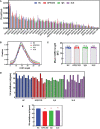

Similar articles
-
Profiling Autoantibodies against Salivary Proteins in Sicca Conditions.J Dent Res. 2019 Jul;98(7):772-778. doi: 10.1177/0022034519850564. Epub 2019 May 16. J Dent Res. 2019. PMID: 31095438 Free PMC article.
-
Fine specificity of the autoimmune response to the Ro/SSA and La/SSB ribonucleoproteins.Arthritis Rheum. 1999 Feb;42(2):199-209. doi: 10.1002/1529-0131(199902)42:2<199::AID-ANR1>3.0.CO;2-1. Arthritis Rheum. 1999. PMID: 10025913 Review.
-
Anti-Ro52 Autoantibody Is Common in Systemic Autoimmune Rheumatic Diseases and Correlating with Worse Outcome when Associated with interstitial lung disease in Systemic Sclerosis and Autoimmune Myositis.Clin Rev Allergy Immunol. 2022 Oct;63(2):178-193. doi: 10.1007/s12016-021-08911-z. Epub 2022 Jan 18. Clin Rev Allergy Immunol. 2022. PMID: 35040083 Review.
-
Reactivity with dichotomous determinants of Ro 60 stratifies autoantibody responses in lupus and primary Sjögren's syndrome.Arthritis Rheum. 2010 May;62(5):1448-56. doi: 10.1002/art.27370. Arthritis Rheum. 2010. PMID: 20131295
-
Understanding systemic lupus erythematosus physiopathology in the light of primary immunodeficiencies.J Clin Immunol. 2008 May;28 Suppl 1:S34-41. doi: 10.1007/s10875-008-9187-2. Epub 2008 Apr 11. J Clin Immunol. 2008. PMID: 18404362 Review.
Cited by
-
Effect of BAFF blockade on the B cell receptor repertoire and transcriptome in a mouse model of systemic lupus erythematosus.Front Immunol. 2024 Jan 9;14:1307392. doi: 10.3389/fimmu.2023.1307392. eCollection 2023. Front Immunol. 2024. PMID: 38264661 Free PMC article.
-
T cell and autoantibody profiling for primary immune regulatory disorders.medRxiv [Preprint]. 2025 Jan 27:2024.02.25.24303331. doi: 10.1101/2024.02.25.24303331. medRxiv. 2025. Update in: J Allergy Clin Immunol. 2025 Jun 18:S0091-6749(25)00649-9. doi: 10.1016/j.jaci.2025.06.007. PMID: 38464255 Free PMC article. Updated. Preprint.
-
Association of hyperactivated transposon expression with exacerbated immune activation in systemic lupus erythematosus.Mob DNA. 2024 Oct 19;15(1):23. doi: 10.1186/s13100-024-00335-8. Mob DNA. 2024. PMID: 39427224 Free PMC article.
-
Where AIRE we now? Where AIRE we going?Curr Opin Allergy Clin Immunol. 2024 Dec 1;24(6):448-456. doi: 10.1097/ACI.0000000000001041. Epub 2024 Oct 23. Curr Opin Allergy Clin Immunol. 2024. PMID: 39440452 Free PMC article. Review.
-
B-Cell Receptor Repertoire: Recent Advances in Autoimmune Diseases.Clin Rev Allergy Immunol. 2024 Feb;66(1):76-98. doi: 10.1007/s12016-024-08984-6. Epub 2024 Mar 9. Clin Rev Allergy Immunol. 2024. PMID: 38459209 Review.
References
Publication types
MeSH terms
Substances
Grants and funding
LinkOut - more resources
Full Text Sources
Medical
Molecular Biology Databases
Research Materials

